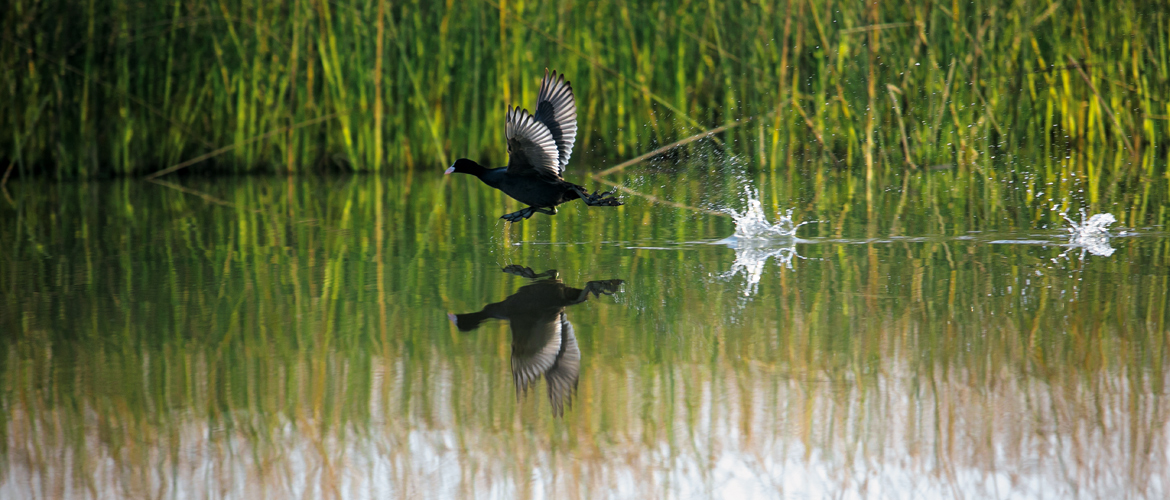
They are descendants of Maharana Pratap and their ancestors served Shah Jahan. But their biggest legacy is their continued contribution to Shahpura and its people
What does it mean to be part of a royal family in modern-day India? For Jai Singh, 52, a descendant of Sujan Singh of Shahpura, it means being a custodian of the people. “They look up to you for help, and you feel that you have a responsibility towards them,” he says matter-of-factly. Back in 2005, when Jai and his elder brother, 54-year-old Shatrujeet Singh, left their successful, enriching careers in metropolitan cities and returned to their ancestral home in Rajasthan, the locals greeted them with gratitude. Their uncle and mother had aged and gradually withdrawn from the everyday affairs of the villagers. So Shatrujeet and Jai, with their intent and youth, became the princes who had returned to save the day. All this may sound anachronistic in 21st-century India. But a peek into the history of the bond between the Singh family and the locals puts things into perspective.

In 1900-1901, Shahpura suffered a terrible famine. Seeing the plight of his subjects and to protect them from such disasters in the future, Raja Nahar Singh ordered the construction of an enormous 15 sq km ‘tank’. The construction of an earthen dam that would enable collection of rainwater in the catchment area was done by a British architect. It took four years and cost over `4.5 lakh. Legend has it that the raja mortgaged his property and family jewels, and survived on bare necessities himself to funnel funds into this construction. Another popular local legend says he almost got washed away while inspecting a breach in this dam. In due time, another such ‘tank’, Umaid Sagar, was built 11km away, and a third, Arwar dam, was started. The latter project couldn’t be completed due to lack of funds and was eventually taken up by the government after Independence. Since then, these huge artificial lakes have changed the landscape of Shahpura, irrigating huge swathes of farmlands that break the monotony of a parched desert largely dominated by the invasive Prosopis juliflora. To a bird gliding over arid Rajasthan on an arduous journey, Shahpura looks like an oasis, a cornucopia of food, water and ample verdant shelter.
Today, Nahar Sagar alone irrigates around 9,000 acres of farmland, Jai says. It is supposed to provide water to about 6,000 acres, but pipes have been laid illegally by desperate farmers to steal water from the lake. As we drive on the periphery of the lake, we encounter these pipes as speed bumps, slithering a few feet under the patchy tarmac as their surreptitious contours crisscross the road. The incessant drawing of water coupled with the lack of rain in 2017 has led to Nahar Sagar drying up completely as early as January this year. The glimmering water has been replaced by a grid of crop plantations. The land was sliced up into tiny polygons and distributed among poor families by the state government a few decades ago. Since then, every year as the collected rainwater recedes, wheat, sarson and cotton crops rise from the ground. Jai is actively engaged with these farmers to dissuade them from using artificial fertilisers in the soil, which would pollute the collected rainwater during monsoon.

On better days, the area sees hundreds of birds flocking to the waterbody, many of them winter visitors from lands afar. This avian biodiversity is a pleasant side effect of the artificial lakes of Shahpura. As many as 191 species are found in the region.
While most of the winged visitors have left Shahpura this year on account of the parched lakes, some tenacious ones have stayed on. They’re found fishing in the waterbody adjacent to the royals’ residence, Shahpura Bagh, which doubles up as a homestay for tourists. Knob-billed ducks with their iridescent green wings perch meditatively on the surface as coots peck at the grassland on the banks, red-wattled lapwings raise their usual cacophony, and river terns glide above the water stalking their marine prey. There’s the occasional flock of Asian openbills and Eurasian spoonbills flying in the distance. On an early morning walk, our guide Shabbir Khan spots pochard ducks, Indian spotted ducks and even some rare Mallard ducks, their gleaming green heads and tail curls distinguishing them from the other feathers of the flock. The greylag and bar-headed geese have already left these shores for greener pastures. Shabbir’s birdspotting skills are on full display when he points out a rare visitor camouflaged at the far end of the lake–a Eurasian curlew.
Take a 15-minute boat ride across this lake, and you arrive at a tiny island. The only structure on this forlorn piece of land is a dilapidated remnant of royal history. It once hosted guests of the raja for private picnics. In 1947, as the princely states merged into the Union of India, the island was handed over to the panchayat. The erstwhile royals’ request for it to be turned into a recreational park for the public obviously fell on deaf ears. Today, the only living entities here are herons who have built nests on its bare trees, and a colony of bats that routinely fights it out with crows for a place to hang.
Even at the palatial homestay and its gardens, there’s no dearth of wings. Scores of peacocks raise a storm with their mating calls, and parakeets are spoilt for choice with over 70 birdfeeders placed around the property. Inside the walls of the two structures, Nahar Niwas and Umaid Niwas, time has stood still. The walls are dotted with ancestral portraits, stuffed heads of game trophies–antelopes, a tiger and a leopard–and vintage décor items. The Singh family, with their three delightful dogs, lives in one part of Nahar Niwas that’s inaccessible to the visitors. But the younger members are more often than not seen mingling with guests in the dining area and basking in the sun on the front lawns. While they are routinely addressed as ‘hukum’ by the staff, all locals, there’s no air of arrogance about them. As you discuss the region’s challenges with Jai and vintage photography equipment with Shatrujeet–formerly a professional photographer in the advertising world–it’s easy to forget that they’re direct descendants of Maharana Pratap.
The provenance of the family’s royalty goes much further back than Raja Nahar Singh. The rural tehsil of Shahpura was once called Phulia. This was before the jagir was granted by Emperor Shah Jahan in 1631 to Sujan Singh as a reward for his services to the Mughal army. Sujan Singh had entered the Mughal service after being insulted by his elder brother, Jai recounts with a chuckle. He renamed the Phulia region to honour his patron. This history is increasingly relevant in an India where the Mughal—Rajput story is thoroughly politicised, if not altered. “Shahpura is as old as the Taj Mahal,” declares Indrajit Deo, drawing an indelible link between our Mughal and Rajput histories. The maternal uncle of Shatrujeet and Jai, Indrajit formally adopted the two brothers to continue the royal family’s lineage since he didn’t have any children of his own.

Not only have the two men carried on the family name, they have also taken upon themselves to shoulder the needs of the poorest in the region. A trust, named after their grandfather Sudarshan Deo, is dedicated to fund healthcare and education in the region. To this end, it single-handedly runs a Hindi-medium primary school that currently educates 166 children free of cost. Around 30 of these kids come from surrounding villages; the rest from Shahpura town. Their tuition fee and daily conveyance costs are paid for by the trust. Now an e-learning facility, replete with laptops, is also coming up on the premises. A visit to the school shows just how involved the soft-spoken Jai Singh can get with the locals. After greeting us with a sing-song chorus of “Good morning, sir”, the children inundate Jai with their classwork scribbles to earn a pat on the back. And he doesn’t disappoint anyone.
Apart from funding a primary school, the family also recognises individual talent and encourages it with resources. One example of this is Ghisalal Berwa. As a young boy, Berwa showed exceptional academic prowess, topping his classes despite the financial instability prevalent in his home. The son of a farmer who was neck-deep in debts, Berwa wanted to train as a teacher, but lacked the funds to follow his dream. The Singh family helped him with cash donations at various stages of his career. Today, 24-year-old Berwa is one of just two teachers taking classes at a primary school of 34 kids in a remote village, 13km away. Berwa’s story is one that vindicates Jai’s idea of helping promising locals who go on to succeed in their own careers and eventually prop up others in their homeland.

Another fine example is our guide for the tour, Shabbir Khan. A miniature painter par excellence, the impressionable Khan dropped out of school in Class 7 to follow his guru, Hakim Mohammad Shaikh, to Over four centuries old, Dhikola Fort is now being restored as a luxe stay option 15km from Shahpura Bikaner, where he practised his art for seven years. But when he returned to Shahpura, Shabbir realised he had no practical means of earning a livelihood. “Even a good artist needs a market to sell his craft,” Shabbir says as he navigates the narrow lanes of Shahpura in a bulging SUV with ease. After trying his luck in Jodhpur in vain, Shabbir finally knocked on the doors of Shahpura Bagh. Seeing his art, they gave him a permanent shop in the property.
But Jai and Shatrujeet saw more potential in Shabbir than he saw in himself. The brothers groomed him in hospitality. Not only did Shabbir pick up English and interpersonal skills rapidly, he even gained expertise in bird spotting from Shatrujeet. Today, he proudly carries an author-signed copy of Birds of the Indian Subcontinent under his armpit, as he gazes into the distance with a nifty pair of binoculars and identifies migratory wings faster than he can twirl his handlebar moustache. His paintings, meanwhile, sell themselves at the shop. Among other local artists, the Joshi family of Shahpura, reported to be the pioneers of Phad painting in the region, is also supported by the Singhs. Tourists to Shahpura Bagh are ferried to the modest home of the Joshis to witness the archaic form of painting done with colours that are extracted by grinding stones mined from the Aravallis. More often than not, they spend a few bucks to acquire these paintings as souvenirs. The Joshi family has been practising the craft for nine generations. Besides the colours they use, the figures they paint are the distinguishing trait of the art. Phad painters tell the folktales of a certain lokdevta–called babaji in Jaipur and Jodhpur, and devnarayan in Shahpura and nearby Ajmer. The painting is usually done on khadi, but locals also order murals for their houses in times of weddings. The Joshis’ most elaborate paintings are used by bhopas–local artistes who sing and dance while narrating folktales with the aid of the paintings. The family’s pièce de résistance is a 23-foot-long painting made on order. During a demonstration, Praveen Joshi paints a quick freehand portrait of a quirky folktale character named Ajab Ghazab–a tiger’s body and stripes with parakeet heads for feet, a camel’s neck for tail, wings of a raptor, and a human head. There’s no dearth of fantasy in this kingdom.
Local employment, Jai says, is his main concern. He made sure that the restoration of Shahpura Bagh in 2005 was done by local hands, as is the ongoing construction of two new suites. The design for this follows the Indo-Saracenic architecture that the original residence features, and the materials have been sourced from nearby villages.

Jai is also excited about the revival of another heritage structure, the Dhikola Fort. A family-owned property located 30 minutes away, this military fort once served as the first defence against invaders. Post Independence, it was given to the Dhikola village for a token sum of `1. For years, a primary school was run in its premises. But once the school moved out of the decaying structure, the fort fell into ruin. In 2005, it was rented for a period of 60 years by the royal family. Now, a couple of its rooms are being restored along with a host of facilities, while the rest of the structure retains its wrinkles. The idea is to enable adventurous couples to ‘rent a fort’ for a truly royal holiday. Until that happens, guests of Shahpura Bagh are hosted for a champagne dinner atop a lookout tower here. As the sun drowns behind the horizon, birds leave the seven surrounding lakes for the comfort of trees, flame torches light up the fort’s empty halls, and history rises from her slumber to greet you on the ramparts. Or maybe it’s the champagne. It’s hard to tell.
The information
Getting There
Shahpura is almost equidistant from Jaipur and Udaipur (220- 230km). But the best way to get here is by train. The nearest rail junction is Bhilwara (45km). A better—connected option is Ajmer (120km), serviced daily from Delhi by multiple trains. I took the New Delhi-Ajmer Shatabdi (7hrs). The property can arrange for a pick-up from Ajmer (3hrs, `2,500).
Where To Stay
Shahpura Bagh offers four suites and five royal suites with little to differentiate between the two (from `20,250 including breakfast plus taxes during Oct—Apr, and from `13,750 during May—Sept; +91- 9529417801, shahpurabagh.com).
What To See & Do
>If you’re a birding enthusiast, Shahpura’s lakes will be a delightful experience in the winter months (Dec—Feb). As many as 191 species can be spotted in the region. A guided birding tour of 2—3 lakes in a jeep costs `3,000 per person plus taxes.
>You can visit the royals’ former picnic place on a tiny island by a 15-minute boat ride (`1,500 per couple plus taxes).
>Take a tour of the family’s ecofarm and get some insights into organic farming (`1,500 per couple plus taxes). >A champagne dinner can be organised at the Dhikola Fort (`5,500 per person plus taxes). >A cycling tour of the rural hinterlands with a picnic meal is also arranged for people wanting a taste of the local life. (`3,500 per person plus taxes). n sumeet keswani






